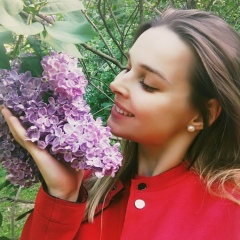"Короли и замки Испании". Экскурсионный тур. Продолжение. Пятый день Эскориал.
Пятый день нашего путешествия вышел очень напряженным и очень омраченный холодной ветреной погодой. Я уже выше говорила, что когда мы выехали из Сеговии, термометр в нашем автобусе показывал всего четыре градуса. Правда в Ла Гранхе погода немного улучшилась, в Долине павших была so so, ну а когда мы подъехали к финальному объекту этого дня - замку Эскориал, то погода рухнула совсем. Защищаясь зонтами от ветра и дождя, шлепая по лужам, ползли мы от автобусного паркинга во дворец. Ну словом: "Мама! Я хочу домой!!!" Но, попав под крышу дворца, настроение наше резко улучшилось.
Итак, Эскориал. Неприступный замок, он же монастырь, он же дворец и резиденция короля Испании Филиппа II. Как пишет всезнающая Вики, архитектурный комплекс вызывает самые разные чувства: его называют и восьмым чудом света, и монотонной симфонией в камне и архитектурным кошмаром. Наверное, все эти определения уместны. Ведь история Эскориала начинается в 1557 году, когда армия Филиппа II разгромила французов во Фландрии, и монарх - победитель решил заложить новый дворцовый комплекс , олицетворяющий силу испанского оружия. Эскориал представляет собой прямоугольник 208 на 162 метра. В нем 15 галерей, 13 часовен, 300 келий, 86 лестниц, 9 башен и 9 органов, 2673 окна 1200 дверей и коллекция из более чем 1600 картин. Многим архитектура дворца напоминает перевернутую жаровню.
Одной из целей создателя замка было создание фамильной усыпальницы. Спускаясь по лестнице, попадаешь в роскошной пантеон, где как на этажерках, но только в яшме, мраморе и бронзе покоятся испанские короли и их супруги. Но только те, которые являлись матерями наследников престола. Кроме роскошного пантеона, посетители не могут пройти мимо вроде как роскошного торта, на "кусках' которых выбиты имена королевских детишек, который на достигли еще совершенолетия и похоронены в этом "торте".
Особый интерес - роскошная библиотека, которая резко контрастирует своей роскошью со скромными интерьерами замка. Ведь девиз этого комплекса: "Дворец для бога, лачуга для короля".
P.S. В замке фотографировать нельзя. Поэтому многие фото, в частности, библиотеки и пантеона, заимствованы.
Пятый день нашего путешествия вышел очень напряженным и очень омраченный холодной ветреной погодой. Я уже выше говорила, что когда мы выехали из Сеговии, термометр в нашем автобусе показывал всего четыре градуса. Правда в Ла Гранхе погода немного улучшилась, в Долине павших была so so, ну а когда мы подъехали к финальному объекту этого дня - замку Эскориал, то погода рухнула совсем. Защищаясь зонтами от ветра и дождя, шлепая по лужам, ползли мы от автобусного паркинга во дворец. Ну словом: "Мама! Я хочу домой!!!" Но, попав под крышу дворца, настроение наше резко улучшилось.
Итак, Эскориал. Неприступный замок, он же монастырь, он же дворец и резиденция короля Испании Филиппа II. Как пишет всезнающая Вики, архитектурный комплекс вызывает самые разные чувства: его называют и восьмым чудом света, и монотонной симфонией в камне и архитектурным кошмаром. Наверное, все эти определения уместны. Ведь история Эскориала начинается в 1557 году, когда армия Филиппа II разгромила французов во Фландрии, и монарх - победитель решил заложить новый дворцовый комплекс , олицетворяющий силу испанского оружия. Эскориал представляет собой прямоугольник 208 на 162 метра. В нем 15 галерей, 13 часовен, 300 келий, 86 лестниц, 9 башен и 9 органов, 2673 окна 1200 дверей и коллекция из более чем 1600 картин. Многим архитектура дворца напоминает перевернутую жаровню.
Одной из целей создателя замка было создание фамильной усыпальницы. Спускаясь по лестнице, попадаешь в роскошной пантеон, где как на этажерках, но только в яшме, мраморе и бронзе покоятся испанские короли и их супруги. Но только те, которые являлись матерями наследников престола. Кроме роскошного пантеона, посетители не могут пройти мимо вроде как роскошного торта, на "кусках' которых выбиты имена королевских детишек, который на достигли еще совершенолетия и похоронены в этом "торте".
Особый интерес - роскошная библиотека, которая резко контрастирует своей роскошью со скромными интерьерами замка. Ведь девиз этого комплекса: "Дворец для бога, лачуга для короля".
P.S. В замке фотографировать нельзя. Поэтому многие фото, в частности, библиотеки и пантеона, заимствованы.
"Kings and castles of Spain." Sightseeing tour. To be continued. Fifth day Escorial.
The fifth day of our trip came out very stressful and very overshadowed by cold windy weather. I already said above that when we left Segovia, the thermometer in our bus showed only four degrees. True, the weather in La Granja improved a little, in the Valley of the Fallen it was so so, but when we arrived at the final object of the day - Escorial Castle, the weather completely collapsed. Protecting ourselves with umbrellas from wind and rain, plopping through puddles, we crawled from the bus parking to the palace. Well, the word: "Mom! I want to go home !!!" But, having fallen under the roof of the palace, our mood improved dramatically.
So, Escorial. An impregnable castle, it is also a monastery, it is also the palace and residence of King Philip II of Spain. As the all-knowing Wiki writes, the architectural complex evokes a variety of feelings: it is called the eighth wonder of the world, and the monotonous symphony in stone and architectural nightmare. Probably all of these definitions are appropriate. After all, the story of Escorial begins in 1557, when the army of Philip II defeated the French in Flanders, and the victorious monarch decided to lay down a new palace complex, representing the strength of Spanish weapons. Escorial is a rectangle 208 by 162 meters. It has 15 galleries, 13 chapels, 300 cells, 86 stairs, 9 towers and 9 organs, 2673 windows of 1,200 doors and a collection of more than 1,600 paintings. To many, the architecture of the palace resembles an inverted brazier.
One of the goals of the creator of the castle was to create a family tomb. Going down the stairs, you find yourself in a luxurious pantheon, where as on the shelves, but only in jasper, marble and bronze are the Spanish kings and their spouses. But only those who were the mothers of the heirs to the throne. In addition to the luxurious pantheon, visitors can’t pass by like a luxurious cake, on the “pieces” of which the names of the royal children are stamped, which have not yet reached the age of majority and are buried in this “cake”.
Of particular interest is the luxurious library, which contrasts sharply with its luxury with the modest interiors of the castle. After all, the motto of this complex is: "Palace for God, a shack for the king."
P.S. You can’t take pictures in the castle. Therefore, many photos, in particular, the library and the pantheon, are borrowed.
The fifth day of our trip came out very stressful and very overshadowed by cold windy weather. I already said above that when we left Segovia, the thermometer in our bus showed only four degrees. True, the weather in La Granja improved a little, in the Valley of the Fallen it was so so, but when we arrived at the final object of the day - Escorial Castle, the weather completely collapsed. Protecting ourselves with umbrellas from wind and rain, plopping through puddles, we crawled from the bus parking to the palace. Well, the word: "Mom! I want to go home !!!" But, having fallen under the roof of the palace, our mood improved dramatically.
So, Escorial. An impregnable castle, it is also a monastery, it is also the palace and residence of King Philip II of Spain. As the all-knowing Wiki writes, the architectural complex evokes a variety of feelings: it is called the eighth wonder of the world, and the monotonous symphony in stone and architectural nightmare. Probably all of these definitions are appropriate. After all, the story of Escorial begins in 1557, when the army of Philip II defeated the French in Flanders, and the victorious monarch decided to lay down a new palace complex, representing the strength of Spanish weapons. Escorial is a rectangle 208 by 162 meters. It has 15 galleries, 13 chapels, 300 cells, 86 stairs, 9 towers and 9 organs, 2673 windows of 1,200 doors and a collection of more than 1,600 paintings. To many, the architecture of the palace resembles an inverted brazier.
One of the goals of the creator of the castle was to create a family tomb. Going down the stairs, you find yourself in a luxurious pantheon, where as on the shelves, but only in jasper, marble and bronze are the Spanish kings and their spouses. But only those who were the mothers of the heirs to the throne. In addition to the luxurious pantheon, visitors can’t pass by like a luxurious cake, on the “pieces” of which the names of the royal children are stamped, which have not yet reached the age of majority and are buried in this “cake”.
Of particular interest is the luxurious library, which contrasts sharply with its luxury with the modest interiors of the castle. After all, the motto of this complex is: "Palace for God, a shack for the king."
P.S. You can’t take pictures in the castle. Therefore, many photos, in particular, the library and the pantheon, are borrowed.










У записи 2 лайков,
0 репостов,
86 просмотров.
0 репостов,
86 просмотров.
Эту запись оставил(а) на своей стене Елена Крылова






















